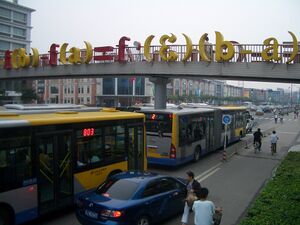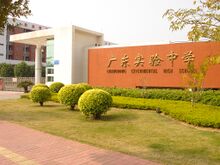التعليم في الصين
| وزارة التعليم | |
|---|---|
| وزير التعليم | تشن باوشنگ |
| ميزانية التعليم الوطنية (2019) | |
| الميزانية | 726 بليون دولار [1] |
| تفاصيل عامة | |
| اللغات الأساسية | الصينية |
| نوع النظام | وطني (في معظم المناطق) |
| معرفة القراءة والكتابة(2015[2]) | |
| الإجمالي | 96.7 % |
| ذكور | 98.2 % |
| إناث | 94.5 % |
| الإبتدائي | 121 مليون (2005)[3] |
| الثانوي | 78.4 مليون (2005), بما في ذلك طلاب المرحلة الإعدادية والثانوية.[3] |
| ما بعد الثانوي | 11.6 مليون (2005)[3] |
التعليم في الصين يُدار بشكل أساسي من قبل نظام التعليم العام الذي تديره الدولة، والذي يقع تحت قيادة وزارة التعليم. يجب على جميع المواطنين الذهاب إلى المدرسة لمدة لا تقل عن تسع سنوات، والمعروفة باسم سنوات التعليم الإلزامي التسعة والتي تمولها الحكومة. يشمل التعليم الإلزامي ست سنوات من التعليم الابتدائي، تبدأ عادةً في سن السادسة وتنتهي في سن الثانية عشرة،[4] تليها ثلاث سنوات من التعليم المتوسط (المدرسة الإعدادية). بعض المقاطعات قد يكون لديها خمس سنوات من التعليم الابتدائي ولكن أربع سنوات للمدرسة الإعدادية. تتبع الدراسة المتوسطة ثلاث سنوات من الدراسة المتوسطة-العليا، وبحلول نهايتها يكتمل التعليم الثانوي. القوانين في الصين التي تنظم نظام التعليم تشمل لائحة الدرجات الأكاديمية، وقانون التعليم الإلزامي، وقانون المعلمين، وقانون التعليم، وقانون التعليم المهني، وقانون التعليم العالى.
في عام 2019، أبلغت وزارة التربية والتعليم عن زيادة قدرها 1.5611 مليون طالب في التعليم الإلزامي.[5] في عام 1985، ألغت الحكومة التعليم العالي الممول من الضرائب، مما يتطلب من المتقدمين للجامعة التنافس على منحة دراسية بناءً على قدراتهم الأكاديمية. في أوائل الثمانينيات، سمحت الحكومة بإنشاء أول مؤسسة خاصة للتعليم العالي، مما أدى إلى زيادة عدد الجامعيين والأشخاص الحاصلين على درجة الدكتوراه من عام 1995 حتى 2005.[6]
في عام 2003، دعمت الحكومات المركزية والمحلية في الصين 1552 مؤسسة للتعليم العالي (كليات وجامعات)، إلى جانب أساتذتها البالغ عددهم 725 ألفًا، و11 مليون طالب (انظر قائمة الجامعات في الصين). يوجد أكثر من 100 جامعة وطنية رئيسية في مشروع 211، بما في ذلك جامعة بكين وجامعة تسينگهوا، والتي تعتبر جزءًا من مجموعة النخبة من الجامعات الصينية. نما الاستثمار الصيني في البحث والتطوير بنسبة 20 في المائة سنويًا منذ عام 1999، متجاوزًا 100 مليار دولار في عام 2011. وتخرج ما يصل إلى 1.5 مليون طالب في العلوم والهندسة من الجامعات الصينية في عام 2006. وبحلول عام 2008، نشرت الصين 184،080 بحثًا في المجلات الدولية المعترف بها - زيادة بمقدار سبعة أضعاف عن عام 1996.[7] في عام 2017، تجاوزت الصين الولايات المتحدة بأكبر عدد من المنشورات العلمية.[8][9]
كانت الصين أيضًا الوجهة الأولى للطلاب الدوليين، واعتبارًا من 2013، كانت الصين الدولة الأكثر شعبية في آسيا للطلاب الدوليين واحتلت المرتبة الثالثة بشكل عام بين الدول.[10] تعد الصين الآن الوجهة الرائدة عالميًا للطلاب الأفارقة الناطقين باللغة الإنجليزية [11] وثاني مضيف لأكبر عدد من الطلاب الدوليين في العالم.[12] تضم الصين أيضًا أفضل جامعتين في آسيا - أوقيانوسيا والدول الناشئة بجامعتي تسينگهوا وبكين المصنفة في المرتبة 20 و23 على التوالي في العالم، بحسب تصنيف تاميز لجامعات العالم.[13] كانت هناك 22 جامعة صينية على قوائم أفضل 200 جامعة عالمية في الترتيب الأكاديمي للجامعات العالمية لعام 2020، بعد الولايات المتحدة فقط من حيث التمثيل الكلي.[14]
على الرغم من أن شنغهاي وبكين وجيانگسو وژىجيانگ تفوقت على جميع أنظمة التعليم الأخرى في برنامج تقييم الطلاب الدوليين،[15] تعرض النظام التعليمي في الصين لانتقادات بسبب تركزيه على الحفظ عن ظهر قلب وعلى التحضير للاختبار. ومع ذلك، قال المتحدث باسم برنامج تقييم الطلاب الدوليين أندرياس شلايشر إن الصين ابتعدت عن التعليم الذي يعتمد على الحفظ.[16] وفقًا لشلايشر، فإن أداء روسيا جيدًا في التقييمات القائمة على الحفظ التام، ولكن ليس في برنامج التقييم الدولي للطلاب (PISA)، في حين أن أداء الصين جيدًا في كل من التقييمات القائمة على الحفظ التام وعلى نطاق أوسع.[17]
التاريخ
التطوير
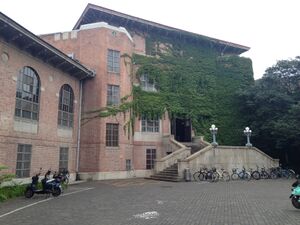
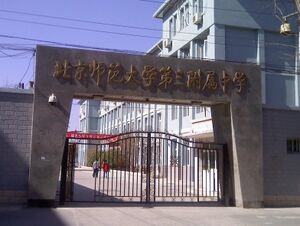
سياسة التعليم
نظام التعليم
قانون التعليم الإلزامي
التعليم الأساسي
المدارس الرئيسية
مدارس التدريب
التعليم الإبتدائي
التعليم الأساسي
التعليم ما بعد الثانوي
التعليم الخاص
التعليم الثانوي
التاريخ
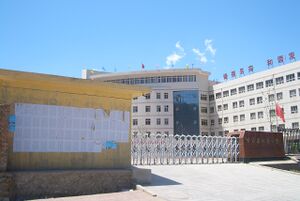
Senior secondary
Senior secondary education often refers to three years of high school (or called senior middle school) education, as from grade 10 to grade 12. Normally, students who have finished six years of primary education will continue three more years of academic study in middle schools as regulated by the Compulsory education law at the age of twelve. This is not compulsory for senior secondary education, where junior graduates may choose to continue a three-year academic education in academic high schools, which will eventually lead to university or to switch to a vocational course in vocational high schools.
Admissions and Zhongkao
Zhongkao (中考), the Senior High School Entrance Examination, is the academic examination held annually in China to distinguish junior graduates. Most commonly, students will be tested in Chinese, Mathematics, English, Physics, Chemistry, Political Science and PE. Scoring systems vary across regions.
Admission for senior high schools, especially selective high schools, is somewhat similar to the one for universities in China. Students will go through an application system where they may choose the high schools at which they wish to study in an order to their preference before the high schools set out their entrance requirements. Once this is completed and the high schools will announce their requirements based on this information and the places they will offer in that year. For instance, if the school offers 800 places in that year, the results offered by the 800th intake student will be the standard requirements. So effectively, this ensures the school selects the top candidates in all the students who have applied to said school in that academic year. The severe competition only occurs in the very top high schools, normally, most students will have sufficient results for them to continue their secondary education if they wish to.
المدارس الحرفية والتقنية
The "Law on Vocational Education" was issued in 1996. Vocational education embraces higher vocational schools, secondary skill schools, vestibule schools, vocational high schools, job-finding centers, and other adult skills and social training institutes. To enable vocational education to better accommodate the demands of economic re-structuring and urbanization, in recent years the government has remodeled vocational education, oriented towards obtaining employment and focusing on two major vocational education projects to meet society's ever more acute demand for high quality, skilled workers. These are cultivating skilled workers urgently needed in modern manufacturing and service industries, and training rural laborers moving to urban areas. To accelerate vocational education in western areas, the Central Government has used government bonds to build 186 vocational education centers in impoverished western area counties.
التعليم الدولي
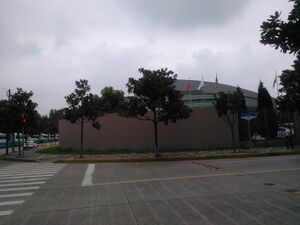
As of January 2021, SICAS –Study In China Admission System[18] listed China as having 300 international schools.[19] ISC defines an 'international school' in the following terms: "ISC includes an international school if the school delivers a curriculum to any combination of pre-school, primary or secondary students, wholly or partly in English outside an English-speaking country, or if a school in a country where English is one of the official languages offers an English-medium curriculum other than the country's national curriculum and is international in its orientation."[20] This definition is used by publications including The Economist.[21] There were 177,400 students enrolled in international schools in 2014.[22]
2013 Nicholas Brummitt, managing director of ISC, reported that there were 338 international schools in Mainland China as of 2013, with 184,073 students. Slightly more than half of the international schools are in the major expatriate areas of China: Beijing, Shanghai, and Guangdong Province, while the remainder is in other areas.[23] Beijing, Shanghai, and Guangzhou have the most international schools while significant numbers also exist in Shenzhen and Chengdu.[24]
Many international schools in Beijing and Shanghai, in accordance with Chinese law, are only permitted to enroll students who have citizenship in areas other than Mainland China.[23] This is because Mainland Chinese students are required to have a certain curriculum, and schools that do not include this curriculum are not permitted to enroll Mainlanders.[24] Mainlander children who hold foreign passports are permitted to attend these schools.[25] As of 2014, 19 international schools in Beijing are restricted to non-Mainlanders. There are also schools using international curricula that accept both Mainlander and non-Mainlander students.[24]
By 2004, increased international business operations resulted in an increase of foreign children. Many of the original post-1949 international schools used International Baccalaureate and North American curricula. By 2004 many international schools in Beijing and Shanghai using the British curricula had opened.[26] The number of international schools in China grew from 22 schools in 2001 to 338 schools in 2013; over the same period, enrollment in international schools rose 25 times to 184,073 students.[23] By the 2010s, many Mainland Chinese parents began sending their children to international schools that accept Mainland students to increase their children's chances of going overseas.[23][22]
There is an increasing number of international universities representation in China in recent years,[27] including but not limited to CEIBS and Yale Center Beijing.[28] Columbia Global Centers Beijing opened in 2009[29] and Harvard Institute Shanghai opened in 2010.[30] Cornell Global is planning to have presence in both Beijing and Shanghai.[31] Stanford University established an academic center in Peking University.[32] Washington University in St. Louis established an EMBA program with Fudan University in 2002 which has since been constantly ranked as one of the best in the world.[33][34]
التعليم العالي

خلفية
التحديث في الثمانينيات
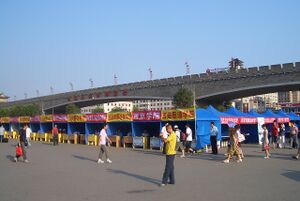
إصلاحات القرن 21
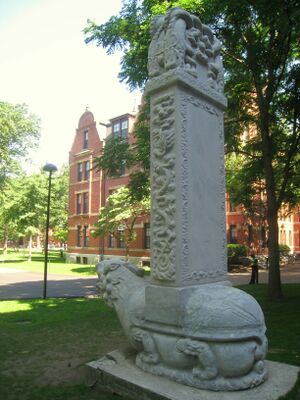
As a result of the growing mismatch between university degrees and job opportunities in China, university students are also increasingly undertaking extracurricular educational training during their time in university. These include university clubs, volunteering activities, and internships.[35] Furthermore, the Chinese state has promoted entrepreneurship among university students by running business training, setting up "business incubators" on campuses, and offering special benefits for student entrepreneurs. As a result of this development, university life in China has become associated with various aspects of "self-development" in addition to formal classroom learning.[36]
الطلاب في الخارج
الترتيب والسمعة
Currently, China has around 2,000 colleges and universities. The quality of universities and higher education in China is internationally recognized as the country has the world's second highest number of universities in the Academic Ranking of World Universities's top 500 universities and in the U.S News & World Report Best Global Universities Rankings.[37][38][39] In the 2020 CWTS Leiden Ranking edition, China surpassed the U.S. with the number of universities including in the ranking for the first time (204 vs.198).[40] China is also home to the two best C9 league universities (Tsinghua and Peking) in the whole Asia-Oceania region and emerging countries, by the Times Higher Education World University Rankings.[13] China has dominated the QS BRICS University Rankings and the THE's Emerging Economies University Rankings, claiming seven of the top 10 spots for both rankings. China is also the most-represented nation overall.[41][42] In 2020, China tops the QS Asia University Rankings list with over 120 universities including in the ranking, and five Chinese universities appear in the Asia Top 10, which is more than any country.[43] There were 22 Chinese universities on lists of the global top 200 in the 2020 ARWU, behind only the United States in terms of the overall representation.[14]
According to THE China Subject Ratings 2020 conducted by the Time Higher Education World University Rankings, Chinese universities are on a par with their counterparts in the US, the UK, and Germany across 89 subjects ahead of others like France, South Korea, and Russia. The country scores above the global average of B score, with 46 percent of its universities’ grades were A+, A, or A-, only slightly behind the US (49 percent).[44] The QS ranking by subjects 2021indicated that universities in China now have a record number in the top 50 universities in the world across all 51 subjects in five broad discipline areas: “Arts and Humanities”, “Natural Sciences”, “Social Sciences and Management”, “Engineering & Technology”, and “Life Sciences and Medicines”.[45]
This reflects the continual development of Chinese higher education and research quality of universities over time.
Leading universities in the Double First Class University Plan such as Peking University, Tsinghua University, and Fudan University, have already gained international reputation for outstanding teaching and research facilities. China has signed agreements with almost 54 countries such as Germany, Great Britain, the United States, Australia, Canada and Russia on mutual recognition of higher education qualifications and academic degrees.[46][47] Many Chinese universities such as United International College now offer degrees in English enabling students with no knowledge of the Chinese language to study there.
تعليم البالغين
تاريخ تعليم البالغين
الإصلاحات
محو الأمية والإصلاح اللغوي
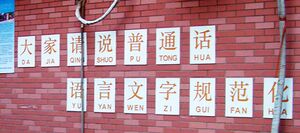
الأنواع
التعليم أونلاين
التعليم الخاص
الاتصالات وتكنولوجيا المعلومات
المعلمون
الزي المدرسي
قضايا
التأكيد على الحفظ والصرامة
عدم المساواة الإقليمية
عدم المساواة بين الجنسين
الرقابة الأكاديمية
التعليم الإنگليزي
تعليم أبناء المهاجرين
انظر أيضاً
- مزاعم الفساد في إنشاء المدارس الصينية
- التعليم الوظيفي وتخطيط الحياة
- المصادر المفتوحة الصينية للتعليم
- ترتيب الجامعات الصينية
- ثقافة الصين
- الفجوة الرقمية في الصين
- التعليم العالي في الصين
- تاريخ العلوم والتكنولجيا في الصين
- الاختبار الامبراطوري
- المركز الدولي للبحث والتدريب للتعليم الريفي (INRULED)
- قائمة جامعات الصين
- اختبار دخول الكلية الوطنية
- OpenCourseWare in China
- حملة التعليم الوطني
- الكشافة والإرشاد في البر الرئيسي للصين
- 2 مليون دقيقة (فيلم وثائقي)
- التعليم في الصين حسب المقاطعة
- مدرسة بوهنت الصينية
الهوامش
المصادر
- ^ "China's education spending for 2019". Retrieved 24 July 2021.
- ^ "The World Factbook". Retrieved 28 September 2009.
- ^ أ ب ت "Resources". International Bureau of Education. Archived from the original on 3 March 2016. Retrieved 31 July 2011.
- ^ "A brief introduction to the Chinese education system". OpenLearn.
- ^ "Overview of educational achievements in China in 2018". Ministry of Education - The People's Republic of China. 22 October 2019.
- ^ "China's Book in Higher Education Archived 29 يوليو 2017 at the Wayback Machine graphic in The New York Times based on information from China's Ministry of Education, 28 April 2005
- ^ Su, Xiaohuan (28 March 2011), China 'to overtake US on science' in two years, BBC World News, ISBN 978-7-80113-993-1, https://www.bbc.co.uk/news/science-environment-12885271, retrieved on 21 June 2018
- ^ magazine, Jeff Tollefson,Nature. "China Declared World's Largest Producer of Scientific Articles". Scientific American (in الإنجليزية). Retrieved 9 May 2020.
{{cite web}}: CS1 maint: multiple names: authors list (link) - ^ Tollefson, Jeff (18 January 2018). "China declared world's largest producer of scientific articles". Nature (in الإنجليزية). 553 (7689): 390. Bibcode:2018Natur.553..390T. doi:10.1038/d41586-018-00927-4.
- ^ Sheehy, Kelsey (8 October 2013). "Explore the World's Top Universities". U.S. News & World Report. Archived from the original on 24 October 2014. Retrieved 26 August 2017.
Asia is among the fastest growing destinations for international students, and foreign enrollment at universities in Indonesia and South Korea have more than doubled since 2005, the agency reports. China continues to be the most popular destination in the region, though, ranking third among countries that host the most international students, IIE reports.
- ^ "China tops US and UK as destination for anglophone African students". Victoria Breeze, The Conversation. Retrieved 18 February 2018.
- ^ "China's 2020 target: reshaping global mobility flows". EAIE (in الإنجليزية). 27 January 2020. Retrieved 6 May 2020.
- ^ أ ب "World University Rankings 2021". Times Higher Education (THE) (in الإنجليزية). 2020-09-02. Retrieved 2020-09-02.
- ^ أ ب "Statistics of Academic Ranking of World Universities - 2020". www.shanghairanking.com. Retrieved 2021-03-05.
- ^ "PISA 2018: Insights and interpretations" (PDF).
- ^ Mance, Henry (7 December 2010), Why are Chinese schoolkids so good?, http://blogs.ft.com/beyond-brics/2010/12/07/why-are-chinese-schoolkids-so-good/, retrieved on 28 June 2012
- ^ Cook, Chris (7 December 2010), Shanghai tops global state school rankings, http://www.ft.com/cms/s/0/20770bf6-01e7-11e0-b66c-00144feabdc0.html, retrieved on 28 June 2012
- ^ "International School Consultancy Group > Home". Archived from the original on 16 Jun 2012. Retrieved 19 January 2015.
{{cite web}}:|archive-date=/|archive-url=timestamp mismatch; 1 نوفمبر 2020 suggested (help) - ^ "China's University Guide > Students> Info". Archived from the original on 19 Jun 2012.
{{cite web}}:|archive-date=/|archive-url=timestamp mismatch; 22 يناير 2021 suggested (help) - ^ "International School Consultancy Group > Information > ISC News". Archived from the original on 4 March 2016.
- ^ "The new local". The Economist. 17 December 2014. Archived from the original on 4 March 2016. Retrieved 26 August 2017.
- ^ أ ب Ge, Celine. "China's booming international school business untouched by slowdown Archived سبتمبر 18, 2015 at the Wayback Machine." South China Morning Post. Monday 7 September 2015. Retrieved on 15 September 2015.
- ^ أ ب ت ث خطأ استشهاد: وسم
<ref>غير صحيح؛ لا نص تم توفيره للمراجع المسماةHornbyReuterspointWest - ^ أ ب ت "International Schools in China: The Changing Landscape" (Archive). Australia China Connections (澳中连接). May/June 2014. Print (Archive). p. 33 (PDF 18/31). Retrieved on 15 September 2015.
- ^ Mansell, Warwick. "Expat guide to China: schools" (Archive). The Telegraph. 27 April 2011. Retrieved on 1 October 2015.
- ^ "International schools follow foreign businesses to China Archived يناير 6, 2016 at the Wayback Machine." South China Morning Post. Saturday, 11 September 2004. Retrieved on 20 October 2015.
- ^ "Archived copy". Archived from the original on 23 September 2017. Retrieved 19 September 2017.
{{cite web}}: CS1 maint: archived copy as title (link) - ^ "Archived copy". Archived from the original on 30 September 2017. Retrieved 25 September 2017.
{{cite web}}: CS1 maint: archived copy as title (link) - ^ "Archived copy". Archived from the original on 10 September 2017. Retrieved 25 September 2017.
{{cite web}}: CS1 maint: archived copy as title (link) - ^ "Archived copy". Archived from the original on 13 September 2017. Retrieved 25 September 2017.
{{cite web}}: CS1 maint: archived copy as title (link) - ^ "Archived copy". Archived from the original on 26 September 2017. Retrieved 25 September 2017.
{{cite web}}: CS1 maint: archived copy as title (link) - ^ "Archived copy". Archived from the original on 22 October 2017. Retrieved 29 October 2017.
{{cite web}}: CS1 maint: archived copy as title (link) - ^ "Executive MBA in Shanghai | WashU Olin Business School". olin.wustl.edu. Retrieved 25 January 2020.
- ^ "Business school rankings from the Financial Times - FT.com". rankings.ft.com. Retrieved 25 January 2020.
- ^ Sum, Chun-Yi (2 January 2018). "From water to tears: extra-curricular activities and the search for substance in China's universities". Children's Geographies. 16 (1): 15–26. doi:10.1080/14733285.2017.1380166. S2CID 148900207.
- ^ Hizi, Gil (3 July 2019). "Marketised 'Educational Desire' and the Impetus for Self-improvement: The Shifting and Reproduced Meanings of Higher Education in Contemporary China". Asian Studies Review. 43 (3): 493–511. doi:10.1080/10357823.2019.1630365. S2CID 198806156.
- ^ "Best Universities in China|Here is a list of the"211" project| Top 25 universities | Study in China". sicas.cn/. Retrieved 21 August 2017.
- ^ "Best Universities in the Word".
- ^ "ARWU World University Rankings 2019 | Academic Ranking of World Universities 2019 | Top 1000 universities | Shanghai Ranking - 2019". www.shanghairanking.com. Retrieved 6 May 2020.
- ^ "The CWTS Leiden Ranking 2020". leidenmadtrics.nl (in الإنجليزية). Retrieved 2020-08-17.
- ^ "QS University Rankings: BRICS 2019". Top Universities (in الإنجليزية). 2018-10-02. Retrieved 2020-09-13.
- ^ "Emerging Economies". Times Higher Education (THE) (in الإنجليزية). 2020-01-22. Retrieved 2020-09-13.
- ^ "QS Asia World University Rankings". Top Universities (in الإنجليزية). Retrieved 2021-03-05.
- ^ "THE China Subject Ratings 2020: results announced". Times Higher Education (THE) (in الإنجليزية). 2020-07-16. Retrieved 2021-03-05.
- ^ "Out Now: QS World University Rankings by Subject 2021". Top Universities (in الإنجليزية). 2021-03-02. Retrieved 2021-03-05.
- ^ "Are China's Academic Qualifications Internationally Recognized? | Study In China". www.studyinchina.com.my. Retrieved 30 March 2020.
- ^ "China forges agreements with 54 countries on mutual recognition of higher education degrees - Xinhua | English.news.cn". www.xinhuanet.com. Retrieved 2020-09-15.
المراجع

This article incorporates text from a free content work. Licensed under CC-BY-SA IGO 3.0 Licence statement: Leveraging information and communication technologies to achieve the Post-2015 Education goal: report of the International Conference on ICT and Post-2015 Education, 11-12, UNESCO, UNESCO. UNESCO.
To learn how to add open-license text to Wikipedia articles, please see Wikipedia:Adding open license text to Wikipedia.
For information on reusing text from Wikipedia, please see the terms of use.- This article contains material from the Library of Congress Country Studies, which are United States government publications in the public domain. "China : Country Studies - Federal Research Division, Library of Congress". Lcweb2.loc.gov. 7 May 2009. Retrieved 15 June 2009.
This article incorporates text from a free content work. Licensed under CC BY-SA 3.0 IGO Migration, displacement and education: building bridges, not walls; Global education monitoring report, youth report, 2019, UNESCO, UNESCO. UNESCO.
To learn how to add open-license text to Wikipedia articles, please see Wikipedia:Adding open license text to Wikipedia.
For information on reusing text from Wikipedia, please see the terms of use.
قراءات إضافية
- General studies and education under Mao, 1949–1976
- Suzanne Pepper, Radicalism and Education Reform in 20th-Century China: The Search for an Ideal Development Model (Cambridge; New York: Cambridge University Press, 1996)
- John F. Cleverley, The Schooling of China : Tradition and Modernity in Chinese Education (North Sydney, NSW, Australia: Allen & Unwin; 2nd, 1991)
- Howard Gardner, To Open Minds: Chinese Clues to the Dilemma of Contemporary American Education (New York: Basic Books, 1989). The observations of a leading American educationist who visited China in the 1980s and ascribed the effectiveness of Chinese education to underlying cultural attitudes and political choices.
- Julia Kwong, Chinese Education in Transition: Prelude to the Cultural Revolution (Montreal: McGill-Queen's University Press, 1979)
- Shi Ming Hu, Eli Seifman, eds., Toward a New World Outlook: A Documentary History of Education in the People's Republic of China, 1949-1976 (New York: AMS Press, 1976)
- W. John Morgan, 'Maoist ideology and education', Chapter 2 in W. John Morgan, Qing Gu, and Fengliang Li (Eds.),Handbook of Education in China, Edward Elgar Publishing, Cheltenham, UK, and Northampton, MA, USA,2017, ISBN 978-1-78347-065-5, pp.43-58,
- Yellienk, Roie, "Chinese education: a tradition of obedience to the spirit of innovation", Makor Rishon, 17 April 2020, https://www.makorrishon.co.il/news/221211/.
- Education after 1976
- M. Agelasto & B. Adamson. 1998. Higher Education in Post-Mao China. ISBN 962-209-450-3 Hong Kong: University of Hong Kong Press, 490 pp.
- Emily Hannum and Albert Par, eds.,. Education and Reform in China. London ; New York: Routledge, Critical Asian Scholarship, 2007. xx, 282 pp. ISBN 0-415-77095-5 Google Books [1]. Comprehensive collection of articles on finance and access under reform; schools, teachers, literacy, and educational quality under market reforms after the death of Mao in 1976.)
- Jing Lin, Education in Post-Mao China (Westport, Conn.: Praeger, 1993)
- Xiufang Wang. Education in China since 1976. Jefferson, N.C.: McFarland & Co., 2003. ISBN 0-7864-1394-8, ISBN 978-0-7864-1394-2. Google Books [2]
- Xiulan Zhang, ed.,. China's Education Development and Policy, 1978–2008. Leiden ; Boston: Brill, Social Scientific Studies in Reform Era China, 2011. xix, 480 p.p. ISBN 978-90-04-18815-0 Google Books [3] Translations of articles by specialists in the PRC on policy making; early childhood education; basic education; special education; vocational education; ethnic minority education; private education.
- Ruth Hayhoe, China's Universities and the Open Door (Armonk, N.Y.: M.E. Sharpe, 1989)
- W. John Morgan and Fengliang Li, 'Education: From egalitarian ideology to public policy'. Chapter 14 in David S.G. Goodman (Ed.), Handbook of the Politics of China, Edward Elgar Publishing, Cheltenham, UK, and Northampton, MA, USA, 2015, ISBN 978-1-78254-436-4, pp. 217-237.
- W. John Morgan, Qing Gu, and Fengliang Li (Eds.),Handbook of Education in China, Edward Elgar Publishing, Cheltenham, UK, and Northampton, MA, USA,2017, xi and 558 pp. ISBN 978-1-78347-065-5.
- Jonathan Unger, Education under Mao: Class and Competition in Canton Schools, 1960–1980 (New York: Columbia University Press, 1982)
- Topical studies
- Heidi A. Ross, China Learns English: Language Teaching and Social Change in the People's Republic (New Haven: Yale University Press, 1993)
- Geoff Dyer and Khozem Merchant. Graduate shortage 'may hinder Chinese economy.' 6 October 2005. Financial Times.
- China Luring Scholars to Make Universities Great, The New York Times, 28 October 2005
- M. Agelasto. 2001. University in Turmoil: The Political Economy of Shenzhen University ISBN 962-86141-1-8 Hong Kong.
- M. Agelasto. 2001. Educational Disengagement: Undermining Academic Quality at a Chinese University ISBN 962-86141-2-6 Hong Kong.
- Cunzhen Yang & Trevor Gale, "Policy Analysis: On Chinese Higher Education Entry Policy" (2004). (Archive)
- Jin, Li (15 April 2011). "Constructivism-Application in Oral English Teaching to Non-English Majors". Global Partners in Education Journal: 13.
- Ming, Zheng Fu; Abbott, Douglas A. (1 October 1992). "Preschool education in China". International Journal of Early Childhood. 24 (2): 50. doi:10.1007/BF03175506. S2CID 143457814.
- W. John Morgan and Bin Wu (Eds.), Higher Education Reform in China: Beyond the Expansion, London and New York: Routledge, 2011, xiii and 174 pp. ISBN 978-0-415-56413-7.
- Perez-Milans, Miguel. 2013. Urban Schools and English Language Education in Late Modern China: A Critical Sociolinguistic Ethnography. New York & London: Routledge. ISBN 978-0-415-50222-1.
- Bin Wu and W. John Morgan (Eds.), Chinese Higher Education Reform and Social Justice London and New York: Routledge, 2016,xii and 160p,ISBN 978-0-415-71122-7.
- Rui Yang, "Internationalising Chinese Higher Education: A Case Study of One Major Comprehensive University".
- Yu ZHANG, "Private Education in China: Issues and Prospects" () Perspectives, Volume 4, No. 4, 31 December 2003.
- Chan, Lai, "Marketization of higher education in China : implications for national development" dissertation University of Hong Kong, 2001.
- Lai, Fung-yi, "Marketization of higher education : a case study of Guangzhou, China" dissertation University of Hong Kong, 2001, re. South China University of Technology.
- China's Vocational Universities. ERIC Digest. by Ding, Anning.
- Borjigin, Monkbat. "A case study of Language education in the Inner Mongolia " (Archive; Japanese title: 内モンゴル自治区における言語教育について ). Journal of Chiba University Eurasian Society (千葉大学ユーラシア言語文化論集) 16, 261–266, 2014-09-25. Chiba University Eurasian Society (千葉大学ユーラシア言語文化論講座). See profile at Chiba University Repository. See profile at CiNii. - In English with a Japanese abstract.
- Zhao, Xu. Competition and compassion in Chinese secondary education. New York: Palgrave MacMillan. 2015. https://www.palgrave.com/gp/book/9781137479402
- Comparative
- 'Chinese-European Cooperation in Education', European Journal of Education, Special Issue, Vol. 44 No. 1. March, 2009, ISSN 0141-8211 (print) ISSN 1465-3435 (online), Guest Editors, W. John Morgan and Albert C. Tuijnman.
- Lenora Chu (2017). Little Soldiers: An American Boy, a Chinese School, and the Global Race to Achieve. Harpers. ISBN 978-0062367853.
وصلات خارجية
- Ministry of Education
- Vocational Training and Employment in China
- Vocational Education in China, UNESCO-UNEVOC
- Education in China, webdossier by Education Worldwide, a portal of the German Education Server
- Rural China Education Foundation
- Center on Chinese Education- Teachers College, Columbia University
- Centre of Research on Education in China, Faculty of Education, The University of Hong Kong
- For China, a Reverse Brain Drain in Science? by Peter N. Spotts, The Christian Science Monitor, 1 May 2009
- "Education," China Digital Times [4]. Annotated aggregation of current Chinese media coverage.
- United International College, a liberal arts college in China.
إحصائيات التعليم في الصين
- UN Human Development Report
- Nation Master
- World Bank
- UNESCO Institute of Statistics
- Ministry Of Education
- Education Statistics China - UNICEF
- UNICEF
- Global Education Digest 2003 - Comparing Education Statistics Across the World
- Organisation for Economic Co-operation & Development (OECD) Directorate for Education, Statistics, Data and Indicators
- Education at a glance 2007
- OECD Education Database - provides internationally comparable data on key aspects of education systems. The database covers: enrollments, graduates and new entrants by sex, age and level of education, teaching staff and expenditure.
- Unesco Database - education data from 1970 to 1998 by subject, region, country & year
- World Education Indicators - 16 most commonly used education on education
- UNESCO Education for All movement
- Country Reports: China - source of statistical information
- Study in China Admission System(中国高等院校国际招生管理服务系统) - Study in China
